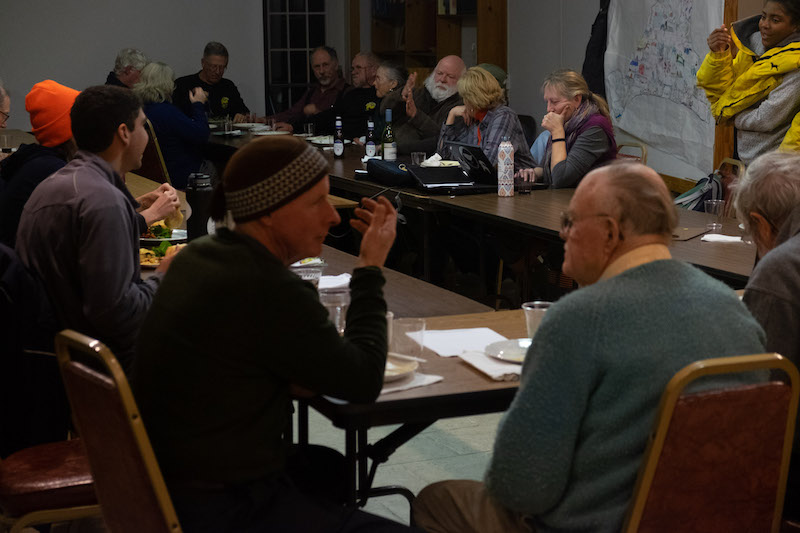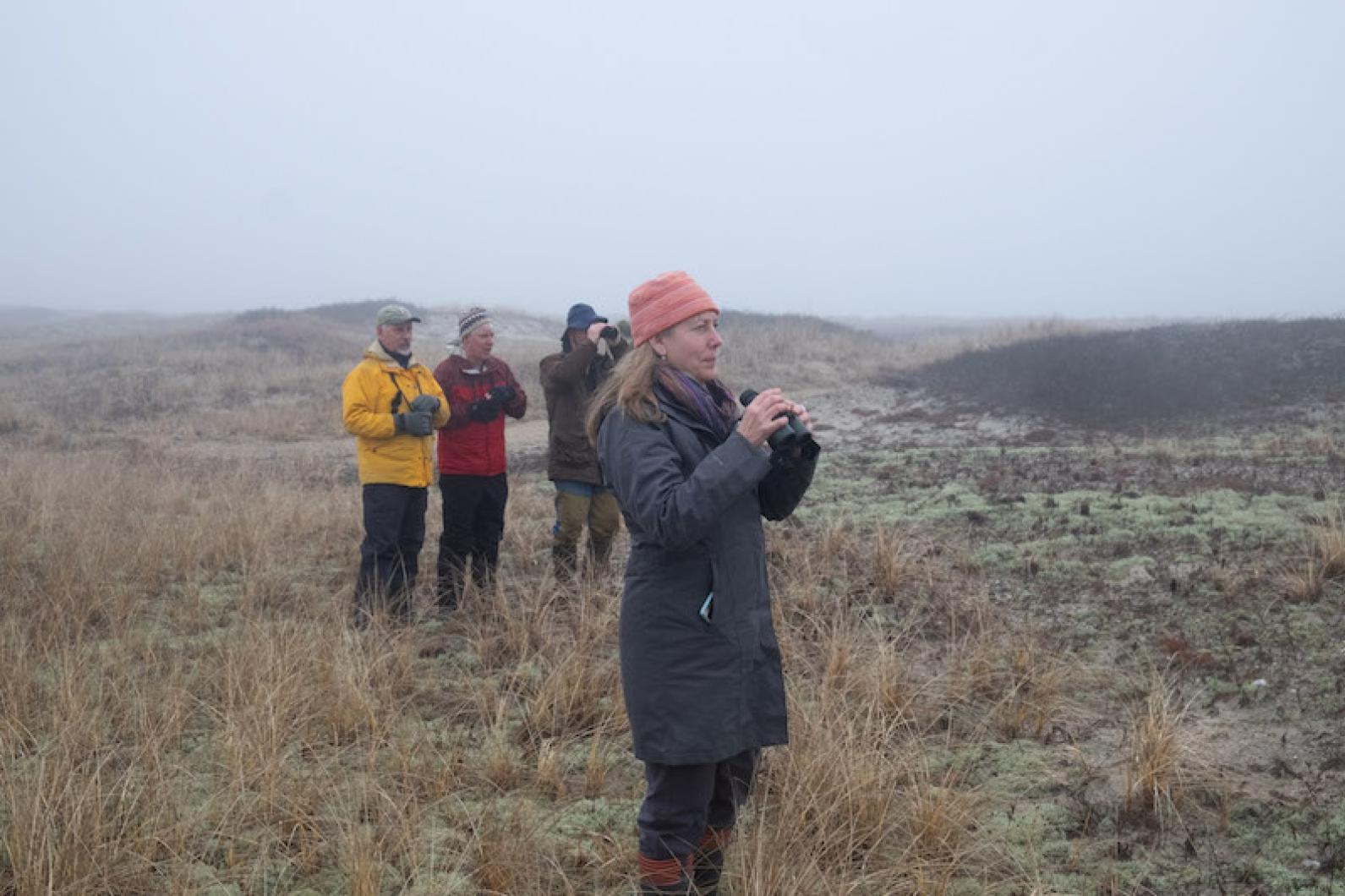Birders from near and far fanned out across Martha’s Vineyard Saturday for the 60th annual Christmas Bird Count.
The bird count is part of a longstanding international citizen science project led by the Audubon Society to conduct a census on birds in North and South America. The count began 120 years ago as a scientific and conservation-minded alternative to what was once a Christmas bird hunt.
Weather conditions on the Island Saturday were drizzly and foggy.
At the end of the day, some 60 birders hung their rain jackets at the Wakeman Center in Vineyard Haven to analyze the data complied by 13 teams that had spread across Island woodlands, beaches, ponds and grasslands.
“Birding is a passion,” said count leader Luanne Johnson, a biologist who is the founder of the Vineyard nonprofit BiodiversityWorks. “Each time you go out it’s like a treasure hunt.”
Discussion of the approximately 16,000 birds spanning 114 species that were counted this year yielded mixed conclusions.
On one hand, the year was a success. The group cited an uptick in the count of a handful of species such as Carolina wrens, white-throated sparrows, northern cardinals, black-capped chickadees and white-winged scoters.
A peregrine falcon was spotted on top of the Old Whaling Church in Edgartown. One group saw two juvenile bald eagles, which have been making a steady return in the last few decades, and were recently removed from the endangered species list.
And a lark sparrow became the 219th species spotted on the Island through 60 years of the count.
But the group also cited a decline in the count of many more species, including long-tailed ducks, great-blue herons, red-tailed hawks, sanderlings, common eiders and red-bellied woodpeckers.
There are many factors that could contribute to a low count, said Vineyard ecologist and bird count data analyst Robert Culbert, such as weather and the number of experts participating in the bird count.

“Chance bad weather can have a significant impact on the count,” he said. “The songbirds could have stayed in the thickets and the fog today made it hard to see, for example . . . the sea ducks way out offshore.”
But he also said that in the past 50 years there has been a 30 per cent decline nationwide in the average number of birds counted in the annual event. Based on his log book, which holds data dating to the inception of the bird count on the Island, Mr. Culbert said the trend is magnified on a local level. The bird count hovered around 40,000 through the 1980s — while the last decade has experienced an average of about 20,000 birds counted.
“Birds are diminishing everywhere,” said Ms. Johnson. “It’s hard to qualify the impacts . . . habitat loss and degradation for development, the fragmentation of woodlands by walking paths . . . [and] the ground nesting birds have more predators like skunks and raccoons which just wipe them out.”
Trevor Lloyd-Evans, director of the Manomet Bird Observatory in Plymouth, added that not each bird counted is a necessarily a positive sign. Lark sparrows and red-bellied woodpeckers, native to the southern United States, have been pushing north in recent years. Common Loon, native to the Arctic and Canada, have been pushing south. The fact that these birds were spotted on the Vineyard this year could be an anomaly, but Mr. Lloyd Evans wasn’t convinced.
“A lot of that has to be due to climate change,” he said.
Still, experts said there is a lot of hope for the future of birds and biodiversity on the Island.
“There is no doubt over the last 50 years the number of birds has declined substantially,” Mr. Culbert said. “But the important thing is that people are out there and interested . . . People are more interested now than ever and the number of bird feeders is at an all-time high. People work to protect things that they are interested in and aware of, which is a good sign for the future.”
Backyard feeder counts from Saturday will also be collected.
Once the total count is logged and rare bird sighting forms have been filled out with supplementary photographs, data will be sent to the Audubon Society and added to the international database. It will be used to track migration patterns, species abundance, species locations, and on the local level, to help birders explore their interests in the future.








Comments (1)
Comments
Comment policy »